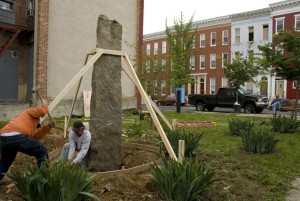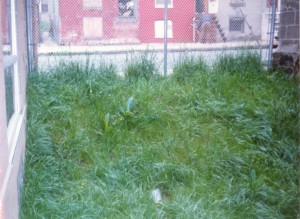
Abandoned, dilapidated properties can have a major impact on a neighborhood. Beyond the physical appearance of an abandoned lot, trash, broken glass and other items that can collect on the lot can become a hazard to the community. One of the first steps in converting an abandoned property to community green space is determining who owns the property in order to get permission to convert the space. Determining ownership however, can be an intimidating process often requiring a little detective work and determination.
Here are five ways to determine the owners of an abandoned property,
Knock on Doors
Although it may seem obvious, the first step in determining property ownership is to ask neighbors living near the property. Older residents of the neighborhood may also know the history of the property and remember the last owner. While it might seem simple enough, a certain level of sensitivity is needed when talking about a neighborhood eyesore. Property owners may be embarrassed about the condition of their property or overwhelmed by a situation that has gotten out of hand. If you do find yourself talking to the property owner, offering to help the owner recover the space from a neighborly (not critical) perspective might be enough to get the project rolling.
Work with Local Realtors
Abandoned properties can bring down housing values in the neighborhood which ultimately affects a Realtor’s livelihood. Realtors have a number of tools at their disposal that can be used to help determine property ownership. They often work in close partnership with title companies or abstractors that can pull a title search to determine property ownership.
Tax Records

Chances are somebody is paying taxes on the property and if they aren’t, the local tax assessor is probably looking for them. At some point the city or county will foreclose on the property and sell it at auction creating a record of ownership. Many local tax records can be searched online through the county or city tax assessor website. Along with the address, knowing the plat or lot number can help with the search. If a property has never been developed, the plat or lot number will be needed. This can often be found through county or city zoning records.
If tax records are not available online, you should be able to search paper records at the tax assessor’s office. Local libraries can also be a good place to search for tax records.
Property Deeds
When a property is sold or transferred a deed is recorded. These deeds are also public record and can be found at the city or county recorder’s office. Some recorders offices also offer online databases for searching property deeds. A deed search can help determine both current and past owners and any liens on the property.

Internet Search
Sometimes simply searching for an address on Google can bring up information about the property. This could be anything from tax records to newspaper stories about the property. A number of websites such as Propertyshark.com offer detailed property records for a fee. Old phone books can also provide an ownership lead and many local phone directories are now available online.
Bonus Tip
If you’ve done all of the above and still can’t determine the property owner many communities have programs in place to help neighbors improve blighted properties. Programs such as Mow to Own in Columbus, Ohio offer the opportunity to purchase abandoned properties in exchange for sweat equity. The Community Partnership Program in Philadelphia loans tools and other supplies to community groups working to clean and maintain their neighborhood. In many cities, blighted properties are an overwhelming problem and local governments will happily support volunteers with the desire and initiative to make their neighborhoods a better place for all.
This post is part of an ongoing series of TKF Foundation articles highlighting resources to help communities build and develop urban green space.
